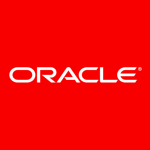I utilize Ansible to harden Red Hat devices across a multitude of disconnected environments.
One benefit of using Red Hat Enterprise Linux is that a lot of backend applications run natively on Red Hat Enterprise Linux as opposed to a Windows-based option. We are a partner with Red Hat. It essentially allows us to do a lot of our infrastructure stand-up and development.
It has enabled our team to centralize development. We have been able to centralize our automation, playbooks, and different collections we use within Ansible to create a centralized code base. We can use that to configure different types of systems with different requirements from different customers. Having a common platform across the entire enterprise has been very helpful.
We are using Red Hat Enterprise Linux very limitedly for containerization projects. It makes things very seamless. If we get a new developer, we can set up a brand new instance of a container for a dev environment or a test environment. It allows different developers to always have the same starting points with containers.
In terms of security features for risk reduction, there are SELinux and FIPS. Also, when you build a Red Hat Enterprise Linux machine, you can stick it right out of the box. It is very helpful. It is very good, especially for programmers and users who do not know anything about cybersecurity. It takes you 85% to 90% of the way. It has been very helpful and good.
The right commonality across the business or enterprise is always very hard to do, especially when different networks and different customers have different requirements. Being able to at least have continuity between those different environments has been helpful. If you have a system admin at a location and you put him or her at a different location, they at least can expect the same type of infrastructure.
When it comes to compliance, it takes you 85% to 90% of the way there. Different networks require different things. Some cannot implement specific standards for whatever reasons, but being able to utilize and leverage Red Hat Ansible to configure that and make sure those changes are made across the entire network has been very helpful.
Portability depends on the circumstances. Some things are more portable than others, such as containers. We utilize Ansible Core very extensively, but other things, such as AAP, are not necessarily as portable because some of our smaller environments do not have the bandwidth or the actual resources to support a big product like that.
In Red Hat Enterprise Linux, I am a big fan of the command line. I like the data manipulation and different commands that we can use. I use Ansible extensively to configure systems.
I have been using Red Hat Enterprise Linux for four years.
It is easily scalable with the solutions and the options they have.
Their support is very good. They are very helpful. Some of them are more experienced in handling the niche problems that we have.
I would rate their customer support a nine out of ten because there is always room for improvement, but it has always been very good.
We have used Ubuntu and other Linux operating systems in the past. However, since I have been with the company, we have used Red Hat Enterprise Linux almost exclusively.
The deployment model depends on the environment. Some are using VMs. Some use containers, and some use bare-metal installations. It depends on what a particular program needs. I support small environments that are on-prem.
It is fairly straightforward to deploy different Red Hat boxes. I was just helping out a sysadmin the other day who had not done it before. It was super straightforward and super easy to deploy.
The return on investment for us and our team is specifically automation. We are able to invest time on the frontend to create different automation playbooks, and we are able to push that out to not only a singular network but also to multiple networks and multiple different configurations. It takes a little bit in the beginning, but there are huge time savings in the end.
If a security colleague is looking at open-source, cloud-based operating systems for Linux instead of Red Hat Enterprise Linux, I would be interested to understand what that colleague's objectives are and why they would consider something other than Red Hat Enterprise Linux. If it is something that fits their particular use case more, they can obviously go with that. Red Hat Enterprise Linux is a standard solution for Linux. If any colleague wants to go for another solution, I have to understand why. I would have to understand what Red Hat Enterprise Linux is not able to provide. However, this has not happened to me.
I would rate Red Hat Enterprise Linux a full ten out of ten.


















